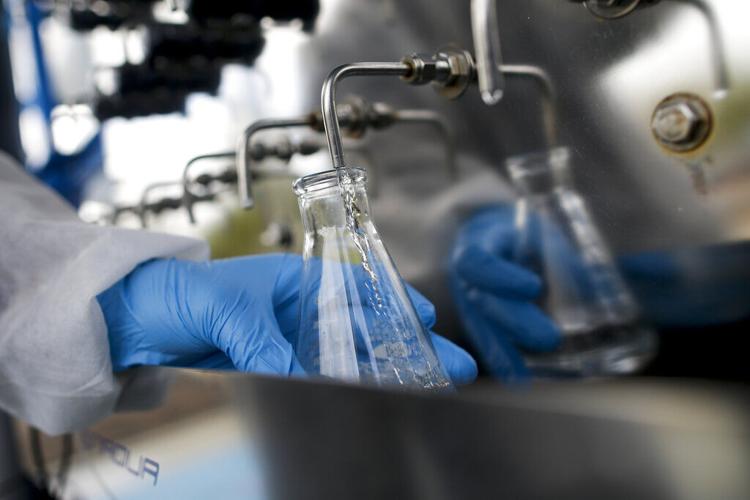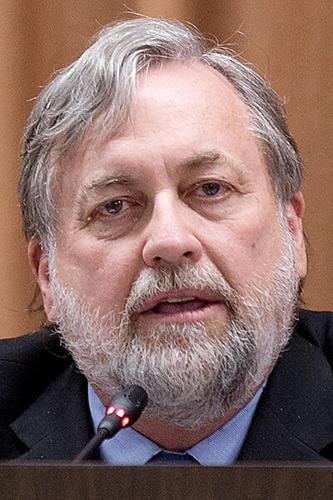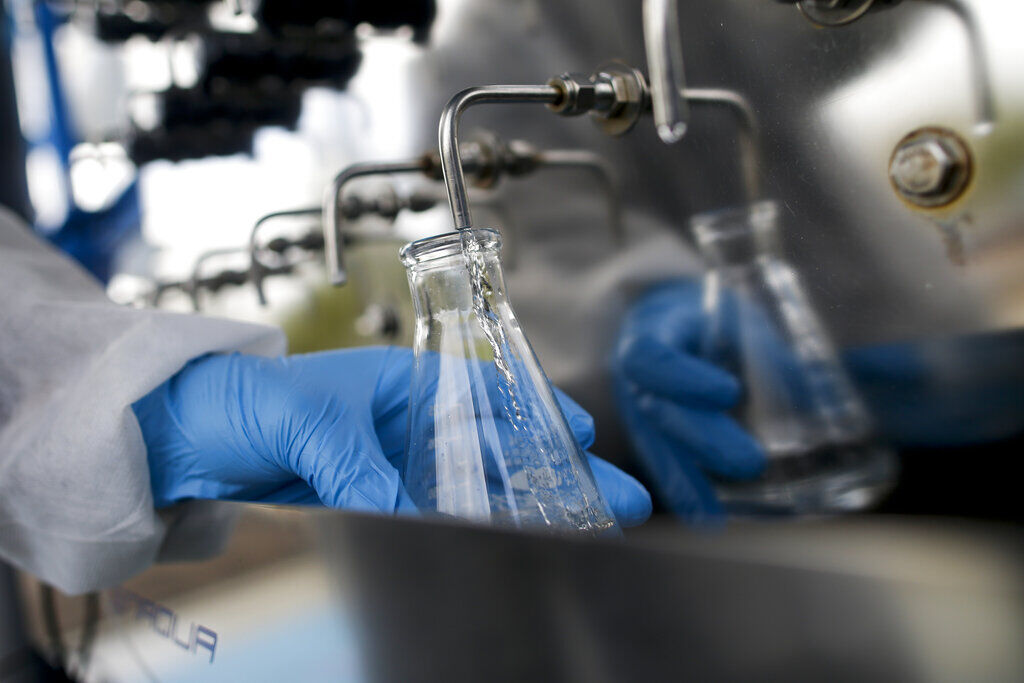For the first time, the Tucson City Council has gone on record supporting the treatment of wastewater for drinking and the large-scale capture of stormwater as measures to boost the city’s water supply.
The council voted 6-1 Tuesday to adopt a new long-range water master plan calling for large-scale use of both practices in the future. That puts the city in line with several other Southwestern cities that are looking at and in some cases already treating wastewater to drink.
The plan also puts Tucson in the footsteps of Southern California officials who are planning or building projects to capture storm runoff for future use.
The lone dissenting vote on what’s called the One Water 2100 plan came from Tucson Councilman Kevin Dahl. He said it should have contained more measures to promote water conservation as well as those aimed at increasing supplies. With the raft of floods, wildfires, droughts and extreme heat raging worldwide this past summer, “things are shaping up to be the tipping point” for climate and water, he said.
“Tucson residents have been very good to date, but we can’t rest on our laurels. At this point public education and outreach are not enough,” Dahl said.
Other council members and Mayor Regina Romero hailed the plan. They said its passage culminates a four-year effort including major campaigns to get public input, including two kinds of opinion surveys, a town hall and three “stakeholder workshops” where citizens could tell officials what they wanted the plan to cover.
“This is a comprehensive plan that leaves no stone uncovered and gives us opportunities to adapt over the next 77 years,” said Councilman Paul Cunningham. “We can go into the weeds and say ‘what about this one thing?’ “ But there’s nothing in the plan that says we can’t put it in later, he said.
“It’s a manifestation of what we’ve done in last 40 years in water stewardship,” Cunningham said.
Won’t be drinking it soon
Overall, the plan has a clear supply-side tilt. The large majority of its implementation measures involve ways of either obtaining new supplies or better protecting existing supplies such as groundwater from contamination.
Plans for wastewater treatment for drinking and stormwater capture are by far the two biggest, most ambitious and expensive measures of the dozens contained in the plan.
But having these high-profile visions in the plan doesn’t mean you’ll be drinking treated wastewater or recaptured stormwater anytime soon.
The plan calls for other steps to be taken first in those areas, including studies, public outreach efforts, demonstration projects and cost-benefit analyses, before the city embarks on full-scale programs.
Various Tucson officials have first promoted, then put on the back burner these ideas for at least two decades. The projects are contained in this new plan partly because members of the public pushed for them and partly because of risks to the city’s current drinking water supply due to the ongoing decline in the Colorado River, said Tucson Water Director John Kmiec.
At this time, Tucson Water officials don’t know when they will take on either effort, Kmiec said. The council will be asked to approve annual implementation plans to gradually put the overall plan into effect.
“I think the post-2026 Colorado River (situation) will be a triggering moment with the department and the mayor and council, to see what options we have that we might pursue sooner rather than later,” Kmiec said Thursday.
The post-2026 scenario for the Colorado River could accelerate plans for these projects, or things could continue as they have been for a few more years, with the city relying mainly on Central Arizona Project water with some groundwater, Kmiec said.
“Nobody really knows what will happen,” Kmiec said.
That’s why the plan contains four future scenarios, two with about a 50% cut in CAP deliveries from the Colorado River and two with a cut of around 14%, he said. All scenarios show Tucson with enough water to serve all expected customers by year 2100. But those projecting a 50% cut in CAP deliveries would require us to rely much more heavily on pumped groundwater.

Landscapers screen plants inside a new Tucson and Pima County stormwater basin in this 2022 photo. The Tucson City Council voted Tuesday to support the large-scale capture of stormwater to boost the city's water supply.
“The importance of the plan is that it’s community stakeholder driven. It’s definitely a community input plan that will guide the utility towards the future. What we’ll be doing in the next several months is coming up with an implementation plan,” Kmiec said.
Arizona now allows it
Tucson Water officials started talking about treating wastewater for drinking in the mid-2000s.But they concluded it wouldn’t be needed for the foreseeable future since Tucson is replenishing more CAP water into the aquifer each year than it needs for drinking, bathing, cleaning and industrial uses. As recently as late fall 2021, utility officials told the Star they still didn’t see the need for it anytime soon.
Besides the stresses on the Colorado River, another reason the new plan calls for this strategy is that Tucson helped successfully push the state to lift a previous ban on “direct potable reuse,” the technical term for treating wastewater and then immediately serving it to the public, Kmiec said.
The Arizona Department of Environmental Quality is now working on new rules that would lay out formal steps for utilities to conduct such treatment. It plans final adoption by the end of 2024, meaning direct reuse could start afterward.
In Arizona, Scottsdale is already doing “indirect potable reuse,” in which treated effluent is recharged into the aquifer, then pumped for drinking. Phoenix plans to put a recycled wastewater plant online by 2030. In Southern California, Orange County and Oceanside already treat wastewater to drink, while San Diego is building such a facility for future use.
The six-county Metropolitan Water District, a Southern California water wholesaling agency, is now studying building such a facility, to go online by 2028, to produce about 50% more recycled water than Tucson Water now consumes in potable water in a year.
As for stormwater, Tucson has no plans now for any large projects. It has signed a cooperative agreement with the Pima County Regional Flood Control District to design and build stormwater capture projects that contain both rainwater harvesting elements and flood control benefits.
Currently, the officials are mainly working on smaller-scale water harvesting projects at pocket parks, and have built four including a 1.6-acre project at Dodge Avenue and Seneca Street, said County Flood Control Director Eric Shepp. A fifth such small project at Alvernon Way at Fifth Street “will begin imminently,” Shepp said.
“We’re talking to the city about how to do these bigger projects. We’re looking for a good project. We’re not at that point,” Shepp said.
Kmiec said the idea of large-scale projects came up among community members who gave city officials their ideas for the plan. “If there’s opportunities, that’s definitely going to be a regional conversation,” he said.
Besides the recycling of wastewater for drinking and the stormwater capture proposals, the plan also calls for less sweeping and costly supply-related activities such as taking all steps possible to protect the city’s CAP allocation and collaborating with other Arizona water agencies to explore “alternative water resource options.”
Another measure calls on Tucson Water to work with other cities and utilities to “achieve and maintain safe yield,” the condition in which no more groundwater is pumped from the aquifer than is naturally and artificially replenished.
“Smart meters” are coming
Of the plan’s conservation measures, by far the most ambitious and imminent will gradually install “smart meters” in homes, businesses and industries. These computerized meters would not only allow utility officials to monitor peoples’ water use remotely, they would allow homeowners and businesses to instantly monitor their own uses.
“They can get an alert when there’s a change in water use that’s unexplained, like a major leak or pipe burst,” said Tim Thomure, a deputy city manager and former Tucson Water director. “Or, it can happen underground and you don’t know that until you get your next bill. Now, you can get an alert right away.
“This would mean you could ping the meter at any time, and know what’s happening real time. You actually could have an app on your phone that would alert you if something goes wrong,” Thomure said.
Tucson Water has obtained a $3 million grant to install the first round of smart meters for what what eventually will probably be a $20 million to $30 million project for the whole utility service area, Thomure said. The first meters will be installed in large use facilities such as business and industry, probably in early 2024.
The city has applied for another $3 million grant, and if it gets it by December or January, the first such meters will be installed in homes starting at least six months later, Thomure said. The city must match each state grant with $1 million of its own money.
The plan also calls for the city to create more incentives for homeowners and businesses to install water-saving projects, and to improve its outreach to low-income homeowners and renters to help them obtain low-water use fixtures such as toilets and shower heads.
The plan also recommends making Tucson’s conservation-friendly water rate structure even more so, by boosting the amount of money customers must pay each time they climb into a higher water-use bracket.
The plan also recommends stricter enforcement of city water waste laws that prohibit people from letting water run down the street, and unspecified mandatory conservation measures.
But the plan says those ideas got much less support from respondents to city surveys than ideas such as smart meters and treating wastewater to drink. They were given “medium” priority, compared to high priority rankings for the smart meter and wastewater proposals.
At Tuesday’s council meeting, Dahl criticized the plan for “a lack of specifics and deliverables for water conservation and demand management. There are no measurable goals for reducing consumption. There are no new programs or incentives proposed.
“For instance, what is the carbon footprint of reliance on recycled treated wastewater? I understand it takes takes a lot of energy, but every gallon of water saved is a gallon we don’t have to treat and deliver,” Dahl said.

Dahl
Vice Mayor Steve Kozachik called the water plan “a roadmap,” and said, “Each year of implementation we can fill those blanks, make those policy decisions” that aren’t in the plan now.
“There’s no way we can anticipate elevation of technology. It’s in our DNA. We’ll get those done,” he said of any necessary future fixes to the plan.
This is the first time the city and Tucson Water are really treating every water source as important, Romero said.
“From stormwater to rainwater to gray water to recycled water to surface water, every single drop is equally important,” the mayor said.
Longtime Arizona Daily Star reporter Tony Davis talks about the viability of seawater desalination and wastewater treatment as alternatives to reliance on the Colorado River.







